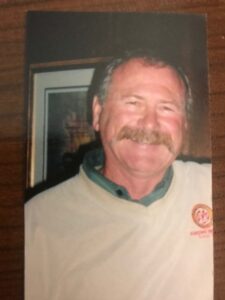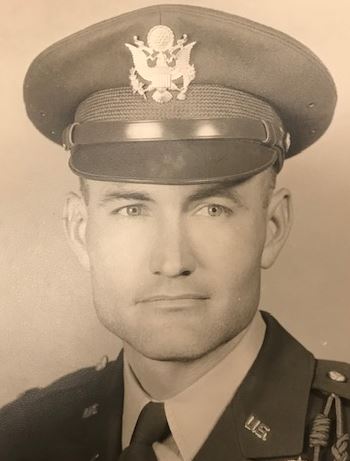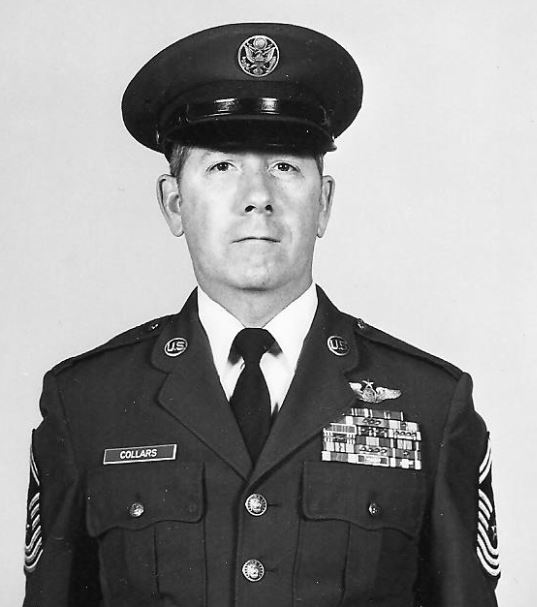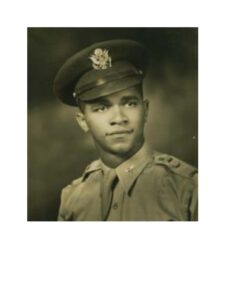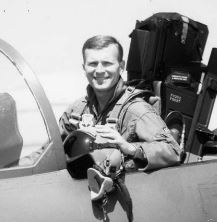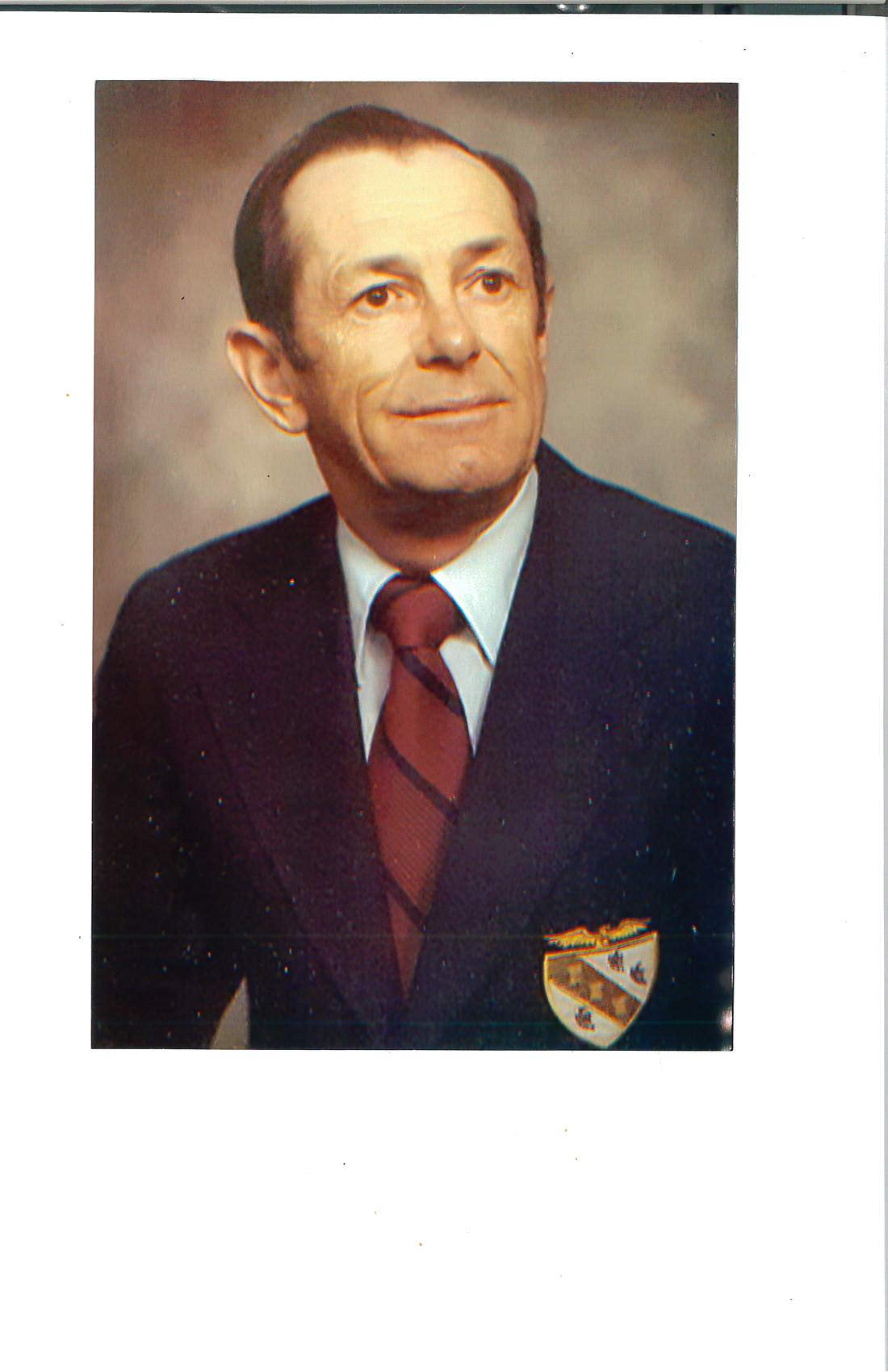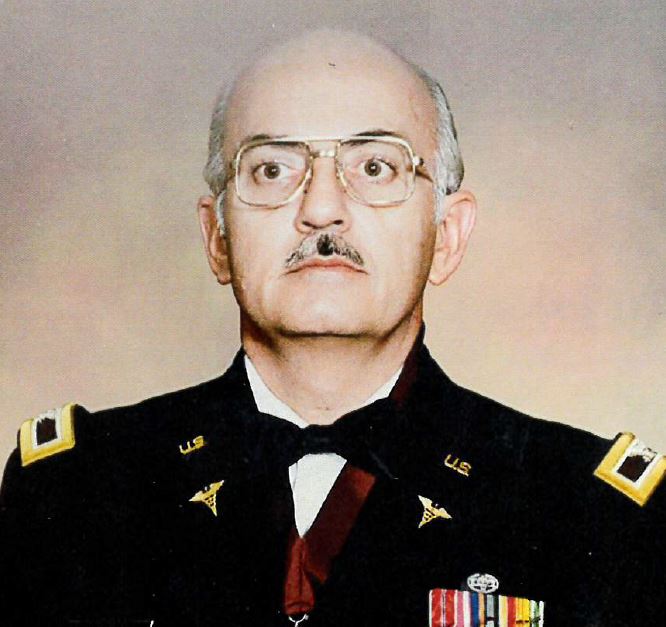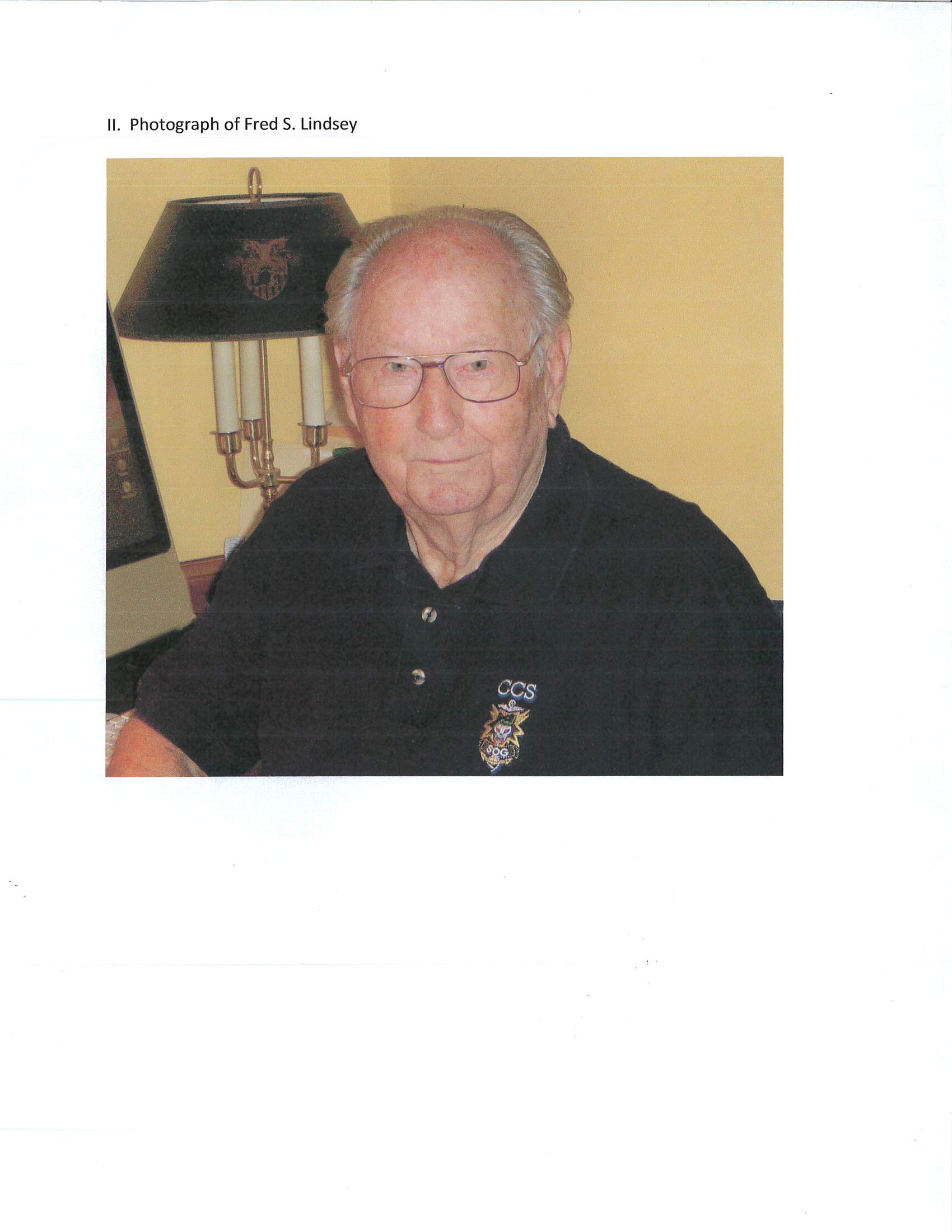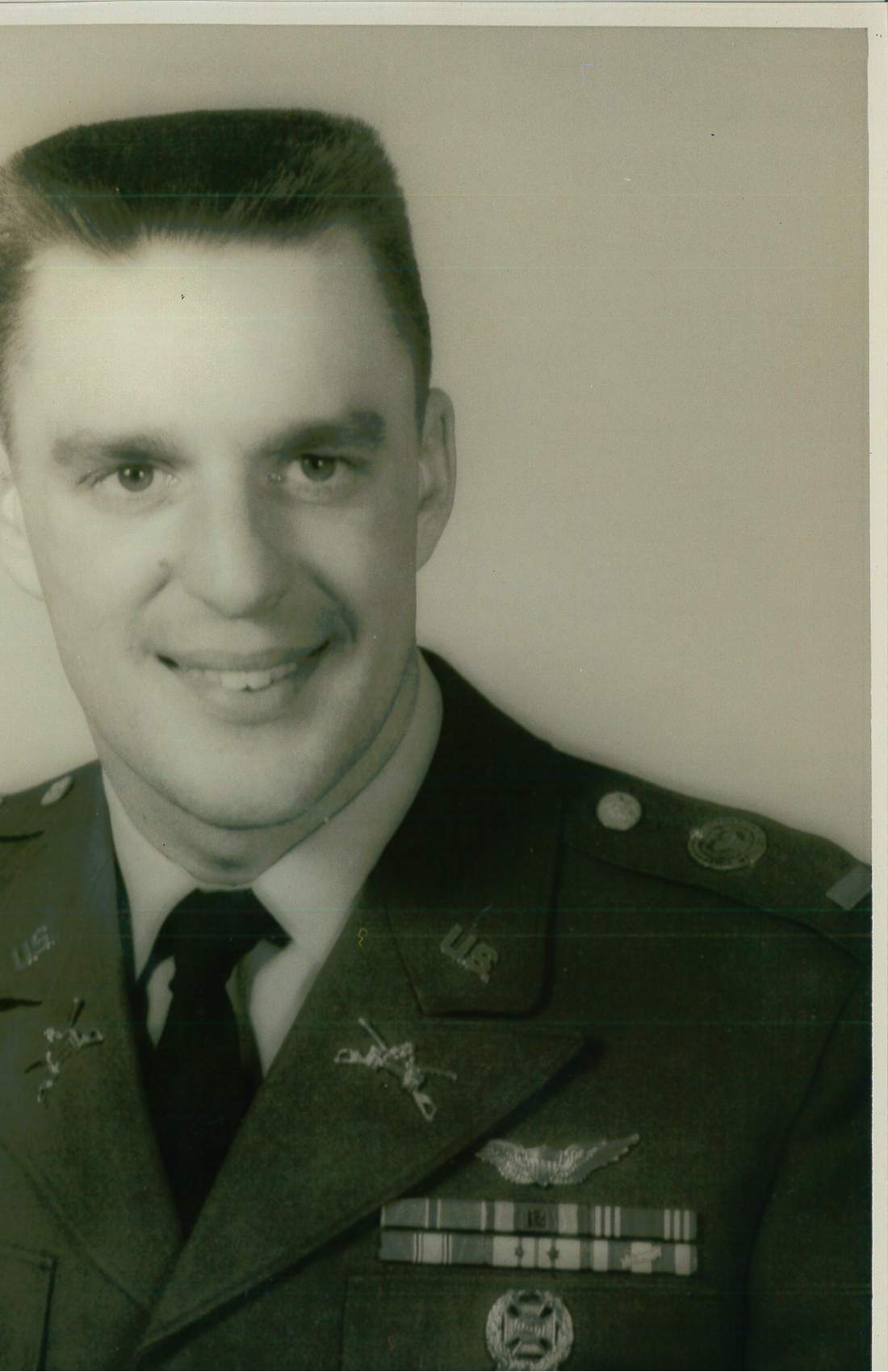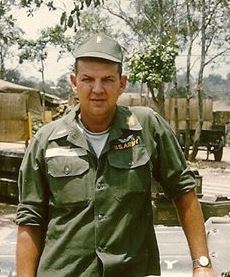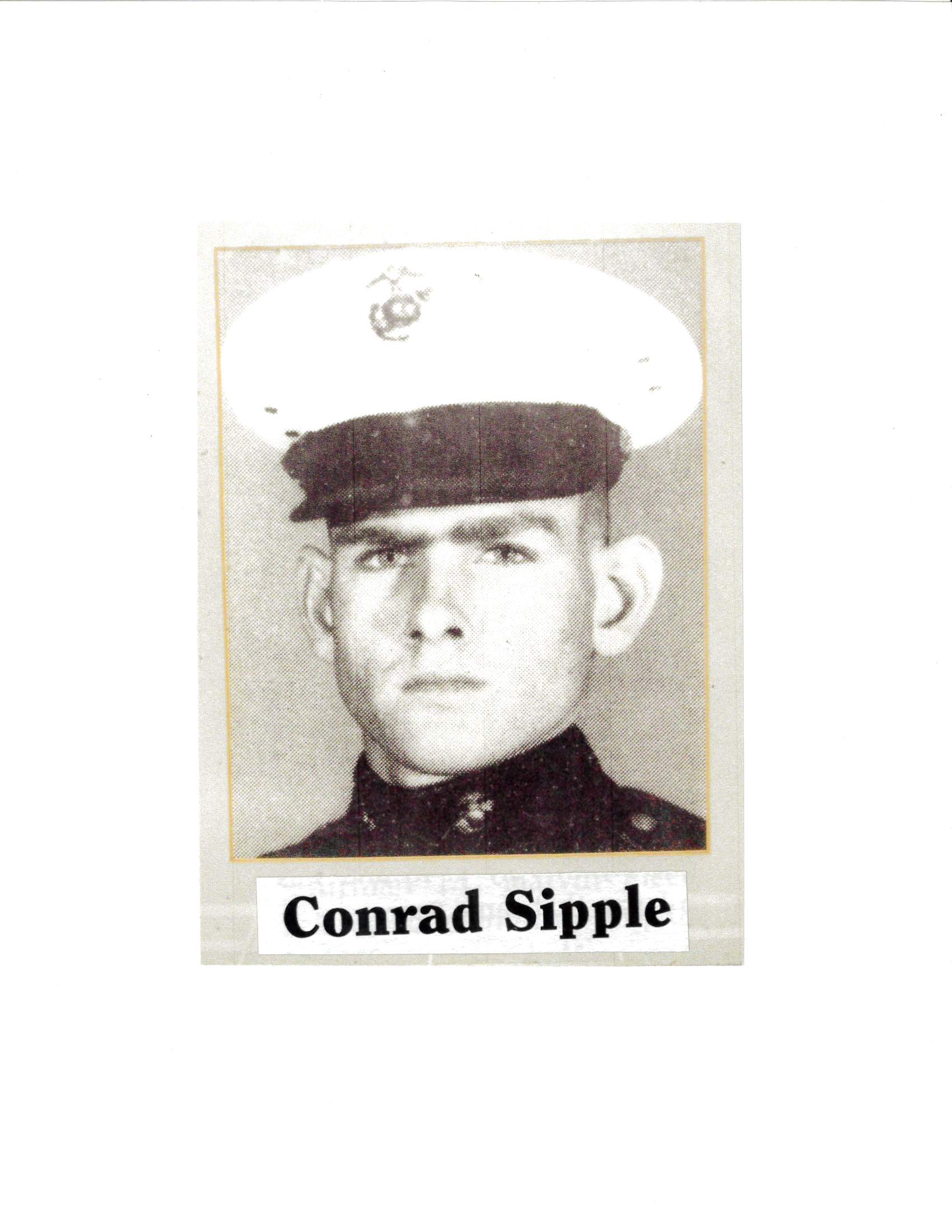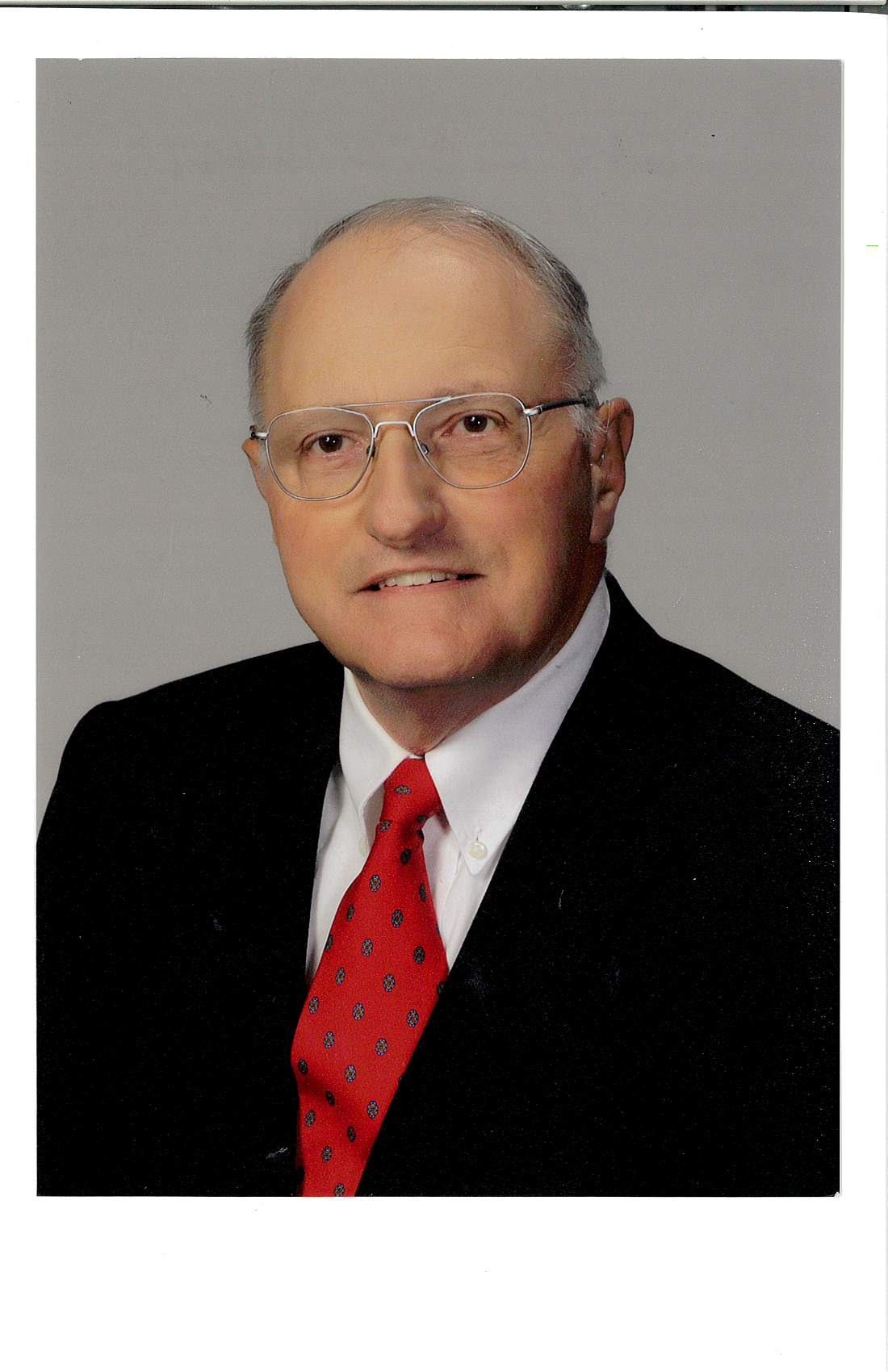Irvin Alexander
Colonel Alexander attended and graduated from Indiana University and joined the Indiana National Guard and served along the US-Mexican border to protect his fellow Americans during the Poncho Villa uprising. He then enrolled in the U.S. Military Academy at West Point and upon graduation was commissioned in the regular Army as a lieutenant in the infantry. After 20 years in the Army Colonel Alexander retired but volunteered for additional service as a Quartermaster in the Philippine Islands prior to its invasion by the Japanese, was taken prisoner and survived the Bataan Death March and prison camps in the Philippines and Korea. As a result of his service with the Philippine Scouts, Lieutenant Colonel Alexander was awarded the Distinguished Service Cross. While with the Scouts, he learned that a company commander had been wounded and was without officer leadership. He promptly went forward to the company and took charge of the situation. Setting a personal example of courage, he pushed the company forward and exposing himself to heavy enemy fire led the company against the overwhelming enemy power. Although suffering disabling wounds to the hand and chest he continued to lead the company. His intrepid actions, personal bravery and zealous devotion to duty exemplify the highest traditions of the military forces of the United States and reflect great credit upon himself, the Philippine Scouts and the United States Army. In addition to the Distinguished Service Cross, Colonel Alexander was also the recipient of the Silver Star, the Purple Heart Medal and numerous service, campaign and achievement medals.
Colonel Alexander attended and graduated from Indiana University and joined the Indiana National Guard and served along the US-Mexican border to protect his fellow Americans during the Poncho Villa uprising. He then enrolled in the U.S. Military Academy at West Point and upon graduation was commissioned in the regular Army as a lieutenant in the infantry. After 20 years in the Army Colonel Alexander retired but volunteered for additional service as a Quartermaster in the Philippine Islands prior to its invasion by the Japanese, was taken prisoner and survived the Bataan Death March and prison camps in the Philippines and Korea. As a result of his service with the Philippine Scouts, Lieutenant Colonel Alexander was awarded the Distinguished Service Cross. While with the Scouts, he learned that a company commander had been wounded and was without officer leadership. He promptly went forward to the company and took charge of the situation. Setting a personal example of courage, he pushed the company forward and exposing himself to heavy enemy fire led the company against the overwhelming enemy power. Although suffering disabling wounds to the hand and chest he continued to lead the company. His intrepid actions, personal bravery and zealous devotion to duty exemplify the highest traditions of the military forces of the United States and reflect great credit upon himself, the Philippine Scouts and the United States Army. In addition to the Distinguished Service Cross, Colonel Alexander was also the recipient of the Silver Star, the Purple Heart Medal and numerous service, campaign and achievement medals.
Dennis A. Beals
PFC Dennis Beals was awarded the Bronze Star Medal – with Valor Device -for heroism in connection with military operations against a hostile force on 21 November 1968 while serving as a driver of a security vehicle engaged in convoy operations in the Republic of Vietnam. Upon hearing on his radio that a convoy was being ambushed, he immediately went to render assistance. Upon reaching the ambush site, he drove the full length of the ambush site, drawing enemy fire and, providing protective fire for the stranded troops. Despite heavy enemy mortar, rocket, automatic weapons and small arms fire, Private Beals calmly maneuvered his vehicle into the most suitable firing position. Even though seriously wounded himself, Private Beals, continued to drive his vehicle and maneuvered it to a safe area. He then noticed two of his crew members were wounded and he helped evacuate them to safety.
PFC Dennis Beals was awarded the Bronze Star Medal – with Valor Device -for heroism in connection with military operations against a hostile force on 21 November 1968 while serving as a driver of a security vehicle engaged in convoy operations in the Republic of Vietnam. Upon hearing on his radio that a convoy was being ambushed, he immediately went to render assistance. Upon reaching the ambush site, he drove the full length of the ambush site, drawing enemy fire and, providing protective fire for the stranded troops. Despite heavy enemy mortar, rocket, automatic weapons and small arms fire, Private Beals calmly maneuvered his vehicle into the most suitable firing position. Even though seriously wounded himself, Private Beals, continued to drive his vehicle and maneuvered it to a safe area. He then noticed two of his crew members were wounded and he helped evacuate them to safety.
Donald E. Bolner
Major Bolner was awarded the Bronze Star Medal – with Valor Device for heroism in connection with military operations against a hostile force on 20 September 1964, in the Republic of Vietnam. Major Bolner, was serving as Senior Advisor, to the 1st Regiment, 1st Infantry Division, Army of Vietnam, during a search and clear operation against the communist Viet Cong. As the unit approached the operational area they were suddenly attacked by a large Viet Cong force hiding in prepared positions. Disregarding his own personal safety, Major Bolner climbed to the top of his armored personnel carrier and directed fire on the enemy. His actions enabled the friendly forces to inflict heavy casualties on the Viet Cong insurgents. He repeatedly exposed himself to intense enemy fire in order to effectively advise the friendly forces. His personal courage and devotion to duty won the respect and admiration of all with him in the actions and contributed significantly to the overall success of the operation.
Major Bolner was awarded the Bronze Star Medal – with Valor Device for heroism in connection with military operations against a hostile force on 20 September 1964, in the Republic of Vietnam. Major Bolner, was serving as Senior Advisor, to the 1st Regiment, 1st Infantry Division, Army of Vietnam, during a search and clear operation against the communist Viet Cong. As the unit approached the operational area they were suddenly attacked by a large Viet Cong force hiding in prepared positions. Disregarding his own personal safety, Major Bolner climbed to the top of his armored personnel carrier and directed fire on the enemy. His actions enabled the friendly forces to inflict heavy casualties on the Viet Cong insurgents. He repeatedly exposed himself to intense enemy fire in order to effectively advise the friendly forces. His personal courage and devotion to duty won the respect and admiration of all with him in the actions and contributed significantly to the overall success of the operation.
Jay A. Collars
Jay Collars enlisted in the US Air Force in 1955 and retired after serving 25 years at the rank of Chief Master Sergeant. Throughout his career he attended many Air Force schools and accumulated numerous awards for service, achievement, and valor. Among those awards were the Air Medal with 7 Oak Leaf Clusters, the Distinguished Flying Cross and the Bronze Star Medal with Valor Device. The citation for the Bronze Star Medal sites Staff Sergeant Jay Collars for distinguishing himself by heroism while engaged in a conflict with an enemy force at Pleiku, the Republic of Vietnam on 22 April 1966. On that date, he, without regard for his own personal safety, assisted in moving two endangered aircraft to safety and removed the leaking external fuel tanks from three other aircraft. His immediate and decisive action, without regard to his own personal safety, greatly reduced the risk of injury to other personnel at the air base. Then, on 22 and 23 November 1970, Sergeant Collars, again distinguished himself while participating in aerial flight as the Flight Engineer. He was aboard his aircraft as it came to the assistance of friendly forces which were under heavy attack. Through his skillful maintenance and control of the aircraft’s power it was able to direct constant and accurate firepower against hostile positions, thus guaranteeing the safety of friendly forces and making possible the evacuation of the wounded.
Jay Collars enlisted in the US Air Force in 1955 and retired after serving 25 years at the rank of Chief Master Sergeant. Throughout his career he attended many Air Force schools and accumulated numerous awards for service, achievement, and valor. Among those awards were the Air Medal with 7 Oak Leaf Clusters, the Distinguished Flying Cross and the Bronze Star Medal with Valor Device. The citation for the Bronze Star Medal sites Staff Sergeant Jay Collars for distinguishing himself by heroism while engaged in a conflict with an enemy force at Pleiku, the Republic of Vietnam on 22 April 1966. On that date, he, without regard for his own personal safety, assisted in moving two endangered aircraft to safety and removed the leaking external fuel tanks from three other aircraft. His immediate and decisive action, without regard to his own personal safety, greatly reduced the risk of injury to other personnel at the air base. Then, on 22 and 23 November 1970, Sergeant Collars, again distinguished himself while participating in aerial flight as the Flight Engineer. He was aboard his aircraft as it came to the assistance of friendly forces which were under heavy attack. Through his skillful maintenance and control of the aircraft’s power it was able to direct constant and accurate firepower against hostile positions, thus guaranteeing the safety of friendly forces and making possible the evacuation of the wounded.
Charles H. DeBow, Jr.
Lieutenant Colonel DeBow was a member of the first class to graduate from the Tuskegee Advance Flying School, Tuskegee Army Air Field, Alabama. After graduation Captain DeBow went on to command the 301st Fighter Squadron in World War II. After his active military service, he returned to Indianapolis and attended Indiana University for two years and then graduated from Hampton University. He eventually returned to Indiana University, where he received a Master’s degree; additionally, he received a Master’s degree from Butler University and began teaching English at Thomas Carr Howe High School in Indianapolis and became an associate lecturer in English at IUPUI for his remaining years. In addition to his tenure as an English teacher, Lieutenant Colonel DeBow, spoke often about the Tuskegee Airmen, in his community, the state and across our Nation. He was promoted to Lieutenant Colonel on 30 January 1967 and transferred to the Reserves on 1 February 1967.
Lieutenant Colonel DeBow was a member of the first class to graduate from the Tuskegee Advance Flying School, Tuskegee Army Air Field, Alabama. After graduation Captain DeBow went on to command the 301st Fighter Squadron in World War II. After his active military service, he returned to Indianapolis and attended Indiana University for two years and then graduated from Hampton University. He eventually returned to Indiana University, where he received a Master’s degree; additionally, he received a Master’s degree from Butler University and began teaching English at Thomas Carr Howe High School in Indianapolis and became an associate lecturer in English at IUPUI for his remaining years. In addition to his tenure as an English teacher, Lieutenant Colonel DeBow, spoke often about the Tuskegee Airmen, in his community, the state and across our Nation. He was promoted to Lieutenant Colonel on 30 January 1967 and transferred to the Reserves on 1 February 1967.
David W. Eberly
Colonel Eberly graduated from Brazil High School in 1965 and Indiana University in 1969 where he participated in ROTC and was commissioned as a Second Lieutenant in the U.S. Air Force. During his 20 plus years in the Air Force he accumulated over 3400 flying hours in various types of aircraft and was recognized for his achievements with the Legion of Merit with two Oak Leaf clusters, the Distinguished Flying Cross, the Bronze Star and the Purple Heart plus numerous Service and Achievement awards. In 1991 Governor Evan Bayh named him a Distinguished Hoosier and presented him with a Sagamore of the Wabash. In August of 1990 Colonel Eberly deployed to Southwest Asia for Operation Desert Shield/Desert Storm and in January 1991 after participating in the initial air strike of Desert Storm, his aircraft was shot down over Iraq and he was taken prisoner by Iraqi forces. Although suffering wounds from the surface to air missile that brought down his aircraft, he managed to evade capture for three days before being taken prisoner. Between the dates of 10 August 1990 and 19 January 1991 Colonel Eberly led fighter operations in the largest tactical fighter wing in the free world. His fighters flew more than 6,000 combat sorties and more than 22,000 hours against key enemy targets deep within Iraq and Kuwait. His forces were directly responsible for the stunningly successful air campaign of Desert Storm.
Colonel Eberly graduated from Brazil High School in 1965 and Indiana University in 1969 where he participated in ROTC and was commissioned as a Second Lieutenant in the U.S. Air Force. During his 20 plus years in the Air Force he accumulated over 3400 flying hours in various types of aircraft and was recognized for his achievements with the Legion of Merit with two Oak Leaf clusters, the Distinguished Flying Cross, the Bronze Star and the Purple Heart plus numerous Service and Achievement awards. In 1991 Governor Evan Bayh named him a Distinguished Hoosier and presented him with a Sagamore of the Wabash. In August of 1990 Colonel Eberly deployed to Southwest Asia for Operation Desert Shield/Desert Storm and in January 1991 after participating in the initial air strike of Desert Storm, his aircraft was shot down over Iraq and he was taken prisoner by Iraqi forces. Although suffering wounds from the surface to air missile that brought down his aircraft, he managed to evade capture for three days before being taken prisoner. Between the dates of 10 August 1990 and 19 January 1991 Colonel Eberly led fighter operations in the largest tactical fighter wing in the free world. His fighters flew more than 6,000 combat sorties and more than 22,000 hours against key enemy targets deep within Iraq and Kuwait. His forces were directly responsible for the stunningly successful air campaign of Desert Storm.
Roland W. Henry
Technical Sergeant Roland Henry had flown 18 combat missions before being shot down over France on 28 May 1944. Captured by the Germans, he was held as a Prisoner Of War at Stalag 4 and when that Stalag was threatened to be overrun by allied forces, the German Army marched over 9,000 prisoners to Stalag 359. Only 4,700 POWs survived the Death March, Roland Henry was one of those survivors. At the end of World War II in Europe, and after being freed from Stalagl 359, Roland Henry returned to the US and Indiana. He married and raised a family of five children. Read into the Congressional Record on 5 May 1995 is the following excerpt: Members of the US Army Air Force Bomber Command suffered through incredible hardships on the Death March yet those that survived, stands as an everlasting testimonial to the triumph of the American spirit over immeasurable adversity and the indomitable ability of camaraderie, teamwork, and fortitude to overcome brutality, horrible conditions and human suffering. In recognition of his ordeal and other service prior to being captured, Roland Henry was awarded the Air Medal with 2 Oak Leaf clusters, the POW Medal and numerous other campaign and service medals.
Technical Sergeant Roland Henry had flown 18 combat missions before being shot down over France on 28 May 1944. Captured by the Germans, he was held as a Prisoner Of War at Stalag 4 and when that Stalag was threatened to be overrun by allied forces, the German Army marched over 9,000 prisoners to Stalag 359. Only 4,700 POWs survived the Death March, Roland Henry was one of those survivors. At the end of World War II in Europe, and after being freed from Stalagl 359, Roland Henry returned to the US and Indiana. He married and raised a family of five children. Read into the Congressional Record on 5 May 1995 is the following excerpt: Members of the US Army Air Force Bomber Command suffered through incredible hardships on the Death March yet those that survived, stands as an everlasting testimonial to the triumph of the American spirit over immeasurable adversity and the indomitable ability of camaraderie, teamwork, and fortitude to overcome brutality, horrible conditions and human suffering. In recognition of his ordeal and other service prior to being captured, Roland Henry was awarded the Air Medal with 2 Oak Leaf clusters, the POW Medal and numerous other campaign and service medals.
Maurice W. Kendall
Major General Maurice Kendall attended local schools and graduated from Dale High School in 1939. Attending Indiana University he received a Bachelor’s degree in Public Business Administration, joined the Enlisted Reserve Corps, attended Infantry Officers Candidate School and was commissioned as a Second Lieutenant in the Infantry. During World War II, he served with the 3rd Infantry Division in France at Anzio and St. Tropez. He was recognized for his wartime service, then a 1st Lieutenant, with the Silver Star Medal, a Bronze Star Medal with Valor Device, the Purple Heart Medal as well as service, campaign, and achievement medals. Promoted to Captain, he was assigned as a part of the occupation force in Stuttgart, Germany. As a First Lieutenant he was awarded the first of two Silver Star Medals. Extracted from that citation follow: “Lieutenant Kendall advanced over 300 yards of wooded terrain to a position from which he observed and directed artillery fire on a counter attacking enemy force. When two enemy soldiers fifteen feet away fired on him, Lieutenant Kendall killed one with this M-1 rifle and wounded the other. His skillful adjustment of artillery fire caused the Germans to withdraw. In 1960, Lieutenant Colonel Kendal attended the Army War College at Carlisle Barracks, Pennsylvania. In 1966, Colonel Kendall was assigned to the Republic of Viet Nam where he commanded the 1st Brigade, 9th Infantry Division. He organized, trained and deployed the unit from Fort Riley, Kansas, to Viet Nam. For his efforts at Fort Riley and in deployment, Colonel Kendall was awarded a second Legion of Merit as well as the Republic of Vietnam Armed Forces Honor Medal, First Class. While on a subsequent assignment he was awarded the National Order of the Southern Cross, from the government of Brazil, and other numerous other achievement, service, and campaign medals. On 31 October 1978, Major General Kendall retired from active duty and was awarded the Distinguished Service Medal, Second Oak Leaf Cluster.
Major General Maurice Kendall attended local schools and graduated from Dale High School in 1939. Attending Indiana University he received a Bachelor’s degree in Public Business Administration, joined the Enlisted Reserve Corps, attended Infantry Officers Candidate School and was commissioned as a Second Lieutenant in the Infantry. During World War II, he served with the 3rd Infantry Division in France at Anzio and St. Tropez. He was recognized for his wartime service, then a 1st Lieutenant, with the Silver Star Medal, a Bronze Star Medal with Valor Device, the Purple Heart Medal as well as service, campaign, and achievement medals. Promoted to Captain, he was assigned as a part of the occupation force in Stuttgart, Germany. As a First Lieutenant he was awarded the first of two Silver Star Medals. Extracted from that citation follow: “Lieutenant Kendall advanced over 300 yards of wooded terrain to a position from which he observed and directed artillery fire on a counter attacking enemy force. When two enemy soldiers fifteen feet away fired on him, Lieutenant Kendall killed one with this M-1 rifle and wounded the other. His skillful adjustment of artillery fire caused the Germans to withdraw. In 1960, Lieutenant Colonel Kendal attended the Army War College at Carlisle Barracks, Pennsylvania. In 1966, Colonel Kendall was assigned to the Republic of Viet Nam where he commanded the 1st Brigade, 9th Infantry Division. He organized, trained and deployed the unit from Fort Riley, Kansas, to Viet Nam. For his efforts at Fort Riley and in deployment, Colonel Kendall was awarded a second Legion of Merit as well as the Republic of Vietnam Armed Forces Honor Medal, First Class. While on a subsequent assignment he was awarded the National Order of the Southern Cross, from the government of Brazil, and other numerous other achievement, service, and campaign medals. On 31 October 1978, Major General Kendall retired from active duty and was awarded the Distinguished Service Medal, Second Oak Leaf Cluster.
Charles W. Lewis
Colonel Lewis graduated from West Virginia School of Medicine in 1962 and moved to Indiana in 1994 and became a Hoosier. He taught Dermatology at Brooke Army Hospital, San Antonio, Texas, and Indiana University and oversaw dermatologic health care at Wishard Hospital and Ezkenazi Hospital. During his tour of duty in the Republic of Viet Nam, he developed an improved treatment for Immersion Foot Disorder and continued his clinical work in his new assignment at Brooke Army Hospital. His compassionate, caring service to the community, state and nation led Indiana University to establish a Distinguished Professorship of Dermatology in his honor. Dr. Lewis published 45 medical articles in scientific journals and two chapters in medical textbooks. Additionally, Dr. Lewis dedicated over 4,000 hours of service to his community in 2007. In 1993 the Surgeon General selected Colonel Lewis to receive the prestigious Major General Lewis Aspey Mologne Award and in 2010 Indiana University named him Dermatology Resident Teacher of the Year. During the course of his Army career Colonel Lewis was awarded the Bronze Star Medal, the Air Medal, the Meritorious Service Medal and numerous service, campaign and achievement medals.
Colonel Lewis graduated from West Virginia School of Medicine in 1962 and moved to Indiana in 1994 and became a Hoosier. He taught Dermatology at Brooke Army Hospital, San Antonio, Texas, and Indiana University and oversaw dermatologic health care at Wishard Hospital and Ezkenazi Hospital. During his tour of duty in the Republic of Viet Nam, he developed an improved treatment for Immersion Foot Disorder and continued his clinical work in his new assignment at Brooke Army Hospital. His compassionate, caring service to the community, state and nation led Indiana University to establish a Distinguished Professorship of Dermatology in his honor. Dr. Lewis published 45 medical articles in scientific journals and two chapters in medical textbooks. Additionally, Dr. Lewis dedicated over 4,000 hours of service to his community in 2007. In 1993 the Surgeon General selected Colonel Lewis to receive the prestigious Major General Lewis Aspey Mologne Award and in 2010 Indiana University named him Dermatology Resident Teacher of the Year. During the course of his Army career Colonel Lewis was awarded the Bronze Star Medal, the Air Medal, the Meritorious Service Medal and numerous service, campaign and achievement medals.
Fred S. Lindsey
Fred Lindsey was nominated by his daughters Roberta and Cheryl Lindsey and the ladies start their nomination with a narrative discussion of Fred Lindsey’s lifetime of accomplishments. The opening sentence of the narrative is, “A father is a hero to his daughters, and our father is no different.” Fred Lindsey entered the military from the US Military Academy at West Point on 4 June 1954 and retired from the Army on 31 July 1972. He attended numerous Army schools and returned to his alma mater to teach. During his years in the military and, of course, after his retirement Fred Lindsey made significant contributions to the community, state and nation. Early in his retirement, Fred Lindsey devoted much of his time to the development of alternative fuel sources. He became a partner in the development of ethanol products. Then, after working several years with numerous organizations he retired from business and devoted his energies to assisting charitable organizations. Among these organizations are the Carmel Golden K Kiwanis Club as well as other community, state and national organizations. Significant among those organizations is Changing Footprints. With this organization Fred Lindsey organized the donation of new shoes and gently used shoes for the children of Afghanistan in addition to over 20 other countries in the world.
Fred Lindsey was nominated by his daughters Roberta and Cheryl Lindsey and the ladies start their nomination with a narrative discussion of Fred Lindsey’s lifetime of accomplishments. The opening sentence of the narrative is, “A father is a hero to his daughters, and our father is no different.” Fred Lindsey entered the military from the US Military Academy at West Point on 4 June 1954 and retired from the Army on 31 July 1972. He attended numerous Army schools and returned to his alma mater to teach. During his years in the military and, of course, after his retirement Fred Lindsey made significant contributions to the community, state and nation. Early in his retirement, Fred Lindsey devoted much of his time to the development of alternative fuel sources. He became a partner in the development of ethanol products. Then, after working several years with numerous organizations he retired from business and devoted his energies to assisting charitable organizations. Among these organizations are the Carmel Golden K Kiwanis Club as well as other community, state and national organizations. Significant among those organizations is Changing Footprints. With this organization Fred Lindsey organized the donation of new shoes and gently used shoes for the children of Afghanistan in addition to over 20 other countries in the world.
Henry C. Marshall
Henry Marshall has proven himself a strong advocate for veteran affairs. He served as the Veteran-to-Veteran Coordinator, the VA Hospital’s Veterans Mental Health Advisory Council and as Commander Vietnam Veterans, Commander of Disabled American Veterans Chapter 2, as well as active membership in American Legion Post 13 and Veterans of Foreign Wars Post 6195. On 3 July 2019, the Brown County Veterans Coalition renamed its Veterans Hall as the Hank Marshall Hall and proclaimed 3 July as Hank Marshall Day. In addition to numerous service, achievement, and campaign medals Henry Marshall was also the recipient of the Bronze Star Medal, the Air Medal (13 awards) and the Army Commendation Medal. Lifting from the citation for the Bronze Star Medal: “His willingness to elevate the military mission above his own welfare and safety reinforced the sections mission readiness by unselfish endeavors and thereby inspired subordinates toward greater unity of effort.
Henry Marshall has proven himself a strong advocate for veteran affairs. He served as the Veteran-to-Veteran Coordinator, the VA Hospital’s Veterans Mental Health Advisory Council and as Commander Vietnam Veterans, Commander of Disabled American Veterans Chapter 2, as well as active membership in American Legion Post 13 and Veterans of Foreign Wars Post 6195. On 3 July 2019, the Brown County Veterans Coalition renamed its Veterans Hall as the Hank Marshall Hall and proclaimed 3 July as Hank Marshall Day. In addition to numerous service, achievement, and campaign medals Henry Marshall was also the recipient of the Bronze Star Medal, the Air Medal (13 awards) and the Army Commendation Medal. Lifting from the citation for the Bronze Star Medal: “His willingness to elevate the military mission above his own welfare and safety reinforced the sections mission readiness by unselfish endeavors and thereby inspired subordinates toward greater unity of effort.
Ivan Moreman
Ivan Moreman attended Indiana Central College where he played football, earned a degree in Secondary Education and later served at Arsenal Technical High School, Indianapolis, from 1950 until 1984. He was inducted into the Tech High School Hall of Fame and was a past President of the Indiana Athletic Officials Association. Corporal Ivan Moreman served in the US Army during World War II with General George Patton’s Third Army as a combat medic. On 18 and 19 March 1945 his unit was advancing through the Siegfried Line near Saarlautern, Germany. On 18 March 1945, the unit was engaged in intense combat when a heavy artillery barrage scored a direct hit on Corporal Moreman’s battalion aid station. Undaunted and with disregard to his own personal safety, and under extreme and intense fire, he led a litter team through the enemy fire to evacuate wounded comrades. He then personally returned to evacuate a wounded man through 500 yards of exposed, contested terrain. Corporal Moreman then returned to the anti-personnel mine field and rescued another wounded comrade. On the following day Corporal Moreman returned, once again, to the mine field and continued to evacuate wounded personnel from the area. For his determined actions to save the lives of his injured comrades, Corporal Moreman was awarded the Silver Star Medal. In addition to the Silver Star Medal, Corporal Moreman was the recipient of numerous campaign, service and achievement medals.
Ivan Moreman attended Indiana Central College where he played football, earned a degree in Secondary Education and later served at Arsenal Technical High School, Indianapolis, from 1950 until 1984. He was inducted into the Tech High School Hall of Fame and was a past President of the Indiana Athletic Officials Association. Corporal Ivan Moreman served in the US Army during World War II with General George Patton’s Third Army as a combat medic. On 18 and 19 March 1945 his unit was advancing through the Siegfried Line near Saarlautern, Germany. On 18 March 1945, the unit was engaged in intense combat when a heavy artillery barrage scored a direct hit on Corporal Moreman’s battalion aid station. Undaunted and with disregard to his own personal safety, and under extreme and intense fire, he led a litter team through the enemy fire to evacuate wounded comrades. He then personally returned to evacuate a wounded man through 500 yards of exposed, contested terrain. Corporal Moreman then returned to the anti-personnel mine field and rescued another wounded comrade. On the following day Corporal Moreman returned, once again, to the mine field and continued to evacuate wounded personnel from the area. For his determined actions to save the lives of his injured comrades, Corporal Moreman was awarded the Silver Star Medal. In addition to the Silver Star Medal, Corporal Moreman was the recipient of numerous campaign, service and achievement medals.
Forrest E. Myers
Chief Warrant Officer Forrest Edward Myers served in World War II, the Korean War and the Vietnam War. He was a highly skilled helicopter pilot and has been active in several organizations since his retirement including Vietnam Veterans of America, Vietnam Helicopter Pilots Association, the VFW and American Legion Post 72, Dover, Tennessee. During his tour of duty in Viet Nam, he received 6 awards of the Air Medal, twice for heroism, in addition to numerous service, campaign and achievement medals. In the early morning hours of 2 November 1965, Chief Warrant Officer Myers participated in six very hazardous evacuations of downed aircraft in hostile territory. His skillful flying, under extremely hazardous flying conditions, resulted in successful recovery of downed aircraft, without damage to his helicopter, nor casualties to his crew. During the return to his base of operations, he spotted another downed helicopter and maneuvered his aircraft to assist in the successful saving of the downed helicopter and its crew. Through his exceptional flying skill and undaunted courage, US forces were able to recover the downed helicopter and rescue its crew. Otherwise, it is certain that both the helicopter and crew would have been captured by the enemy. Returning to Vietnam in 1968, Chief Warrant Officer Meyers again displayed exceptional heroism during hazardous conditions. He again displayed personal bravery and devotion to duty by flying numerous combat missions into the A-Shau Valley, Republic of Vietnam, in support of Operation Delaware. In these operations, he successfully completed his mission by exposing himself to hostile ground fire, while skillfully evading the enemy barrages and displaying personal bravery and exceptional devotion to duty.
Chief Warrant Officer Forrest Edward Myers served in World War II, the Korean War and the Vietnam War. He was a highly skilled helicopter pilot and has been active in several organizations since his retirement including Vietnam Veterans of America, Vietnam Helicopter Pilots Association, the VFW and American Legion Post 72, Dover, Tennessee. During his tour of duty in Viet Nam, he received 6 awards of the Air Medal, twice for heroism, in addition to numerous service, campaign and achievement medals. In the early morning hours of 2 November 1965, Chief Warrant Officer Myers participated in six very hazardous evacuations of downed aircraft in hostile territory. His skillful flying, under extremely hazardous flying conditions, resulted in successful recovery of downed aircraft, without damage to his helicopter, nor casualties to his crew. During the return to his base of operations, he spotted another downed helicopter and maneuvered his aircraft to assist in the successful saving of the downed helicopter and its crew. Through his exceptional flying skill and undaunted courage, US forces were able to recover the downed helicopter and rescue its crew. Otherwise, it is certain that both the helicopter and crew would have been captured by the enemy. Returning to Vietnam in 1968, Chief Warrant Officer Meyers again displayed exceptional heroism during hazardous conditions. He again displayed personal bravery and devotion to duty by flying numerous combat missions into the A-Shau Valley, Republic of Vietnam, in support of Operation Delaware. In these operations, he successfully completed his mission by exposing himself to hostile ground fire, while skillfully evading the enemy barrages and displaying personal bravery and exceptional devotion to duty.
Conrad A. Sipple
Conrad Sipple was killed in action against a hostile enemy force on 5 March 1966 at the age of 22 and for his actions was the recipient of the Navy Cross for extraordinary heroism as a squad leader. Excerpts from the Navy Cross citation follow: Corporal Sipple’s platoon was engaged in combat with Viet Cong forces entrenched on a commanding ridgeline and heavily armed with heavy small-arms and automatic weapons. Numerous casualties were inflicted on the platoon and those casualties fell in areas exposed to annihilating fire. With full knowledge of the hazards involved and with complete disregard for his own safety, Corporal Sipple braved the fierce hostile fire repeatedly to assist in the evacuation of wounded Marines. Oblivious to the hazards of the enemy automatic weapons fire, twice, he braved the fire alone to assist wounded comrades and return them to safety. On his fourth sally into the furious hail of enemy fire he was mortally wounded. Through his outstanding initiative and inspiring valor in the face of great personal risk to himself, he saved his comrades from further injury or possible loss of life. He gallantly gave his life in the cause of freedom. The citation is signed “For President Johnson” and by the Secretary of the Navy, Paul H. Nitze.
Conrad Sipple was killed in action against a hostile enemy force on 5 March 1966 at the age of 22 and for his actions was the recipient of the Navy Cross for extraordinary heroism as a squad leader. Excerpts from the Navy Cross citation follow: Corporal Sipple’s platoon was engaged in combat with Viet Cong forces entrenched on a commanding ridgeline and heavily armed with heavy small-arms and automatic weapons. Numerous casualties were inflicted on the platoon and those casualties fell in areas exposed to annihilating fire. With full knowledge of the hazards involved and with complete disregard for his own safety, Corporal Sipple braved the fierce hostile fire repeatedly to assist in the evacuation of wounded Marines. Oblivious to the hazards of the enemy automatic weapons fire, twice, he braved the fire alone to assist wounded comrades and return them to safety. On his fourth sally into the furious hail of enemy fire he was mortally wounded. Through his outstanding initiative and inspiring valor in the face of great personal risk to himself, he saved his comrades from further injury or possible loss of life. He gallantly gave his life in the cause of freedom. The citation is signed “For President Johnson” and by the Secretary of the Navy, Paul H. Nitze.
Gary C. Steinhardt
Dr. Gary Steinhardt has long been a veteran supporter and has sought many activities and ways to assist veterans in Indiana and across the nation. He has been especially active with veteran support in Tippecanoe County. He led the renovation of Memorial Island in Columbian Park and has registered at risk and homeless veterans for the community Stand Down for the past 12 years. As a member of the Mary T. Klinker Veteran Resource Center, he has been an active and successful fund raiser. Since his retirement from the Army Reserve, he has been helpful in many projects to better the lives of veterans. His work has directly impacted and benefitted veterans in Tippecanoe County, for example when the Stand Down project was begun approximately 200 at risk veterans were identified and last year the number was only 60.
Dr. Gary Steinhardt has long been a veteran supporter and has sought many activities and ways to assist veterans in Indiana and across the nation. He has been especially active with veteran support in Tippecanoe County. He led the renovation of Memorial Island in Columbian Park and has registered at risk and homeless veterans for the community Stand Down for the past 12 years. As a member of the Mary T. Klinker Veteran Resource Center, he has been an active and successful fund raiser. Since his retirement from the Army Reserve, he has been helpful in many projects to better the lives of veterans. His work has directly impacted and benefitted veterans in Tippecanoe County, for example when the Stand Down project was begun approximately 200 at risk veterans were identified and last year the number was only 60.

